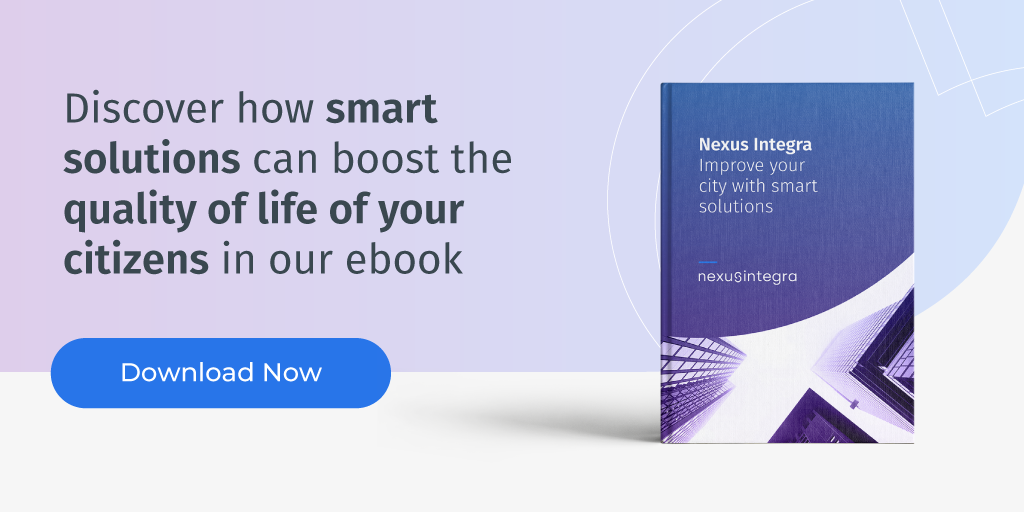The Internet of Things (IoT), Artificial Intelligence and Big Data are the basis of smart cities. A concept that arises from the worrying scarcity of resources and the situation of overpopulation in cities.
Both aspects are apparently negative factors. However, it should be noted that overpopulation favours the exchange of knowledge and the enrichment of the economy.
Once the current paradigm has been contextualised, we can state that energy optimisation, sustainability and citizen well-being are a challenge for developed countries. This is why we are already living in a trend towards the development of Smart Cities.
There is currently a Smart Cities network in Spain with more than 80 towns and cities. It is estimated that in 2050, 85.9% of the inhabitants of developed countries will live in smart cities.
The fusion of human, technological and innovative factors defines the Smart City concept, and aim to offer sustainable and efficient support tools that provide differential value to residents.
Smart cities have a “nervous system” known as the Operations Centre, where all data is collected and unified. In this way, it is possible to know the state of the city in real time, as well as facilitating decision-making, planning and management of vital services for the population, as well as being more efficient in daily operations.
Smart City, technology at the service of the citizen
The coexistence between the human factor, environment, economy and governance is fundamental to achieve the commitment and involvement of the agents involved in the process and development of smart cities.
However, to understand the benefits that the application of ICTs brings to the well-being of the urban environment, the three foci that comprise it must be mentioned:
- Sustainability and the environment. Smart Cities involve the development of a sustainable environment, capable of managing environmental resources through: energy recovery models and the use of high-impact renewable energies.Among the environmental objectives of smart cities, we highlight the application of energy saving systems, lighting and water distribution that aim to promote cost reduction and optimise resources through the implementation and use of renewable energies.
- Transparency and inclusiveness. Along with the environment, this is another important reason why smart cities are developing. Offering solutions based on people’s ideas and needs, establishing digital communication channels with citizens.
- Generating wealth. Cities are the engine of the economy. In order for them to be able to take on the economic growth driven by the development of smart cities, it is necessary to establish a sustainable economic model, in addition to automated management systems.
- Citizen well-being. The development of Smart Cities contributes to the well-being of citizens, focusing on the development of improvements in education, health and social inclusion.
Backbone elements of the Smart City
- Communication interfaces. Broadband networks ensure connectivity through a high quality wired and wireless network that allows sensors and devices to be connected.
- Connected sensors and devices. Smart cities are fuelled by data collection from a variety of sources. The internet of things (IoT) facilitates the processing and transformation of sensor-generated data. Similarly, predictive analytics facilitates not only decision-making, but also the development of new public services.
- Communication infrastructure. This consists of the integration of open-access collaboration and communication platforms that facilitate interaction between the administration and/or management and the population.
The transformation of traditional buildings into Smart Buildings
Integrated Operations and Control Centres
Considered the nervous system of smart cities, the integrated operations and control centre brings together in a single digital platform: the technological, physical and process infrastructure of all the collaborative assets involved in Smart Cities.
In short, the integrated centre is fed by all the data collected and processed from the monitoring and management of the aforementioned backbone elements.
Features
- Real-time data collection and analysis from asset and device monitoring.
- Establishes a participatory and collaborative governance model.
- Provides a unified view of the smart areas of the city
- Facilitates and accelerates decision making
Create your city’s operations centre with Nexus Integra
Nexus Integra is a centralised and interoperable platform that enables the unified management of city services from a single interface. Improve the management and quality of life of the population with a modular and scalable system that allows you to obtain a 360º vision in real time of everything that happens.
You will be able to obtain intelligent control environments in hospitals, schools, transport, town halls and many more.
Ask our specialised team for advice.


